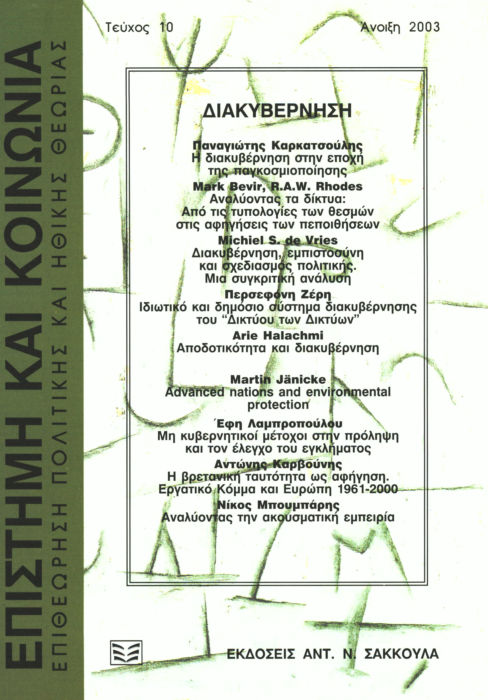Analysing acousmatic experience: towards a cultural sociology of sound
Abstract
This article attempts to examine the socio-cultural significance of sound and of acoustic experience, especially within the late modern communicative environments. Sound is becoming a critical field of contemporary cultural and social practices since it does not only share the same characteristics with late modernity, such as multimodality, virtuality and risk, but also presents performative realities at an individual - collective level, which transcends our overloaded, visual-dominated sense of the world. In discussing the acoustic experience of space, time and the body, we argue that cultural acoustics should elaborate conditions of transformations rather than transmissions of information, experiences and identities. This point is further discussed in relation to: a) electroacoustic technology, which amplifies both objectification and dispersion of sound, b) the medium of television, the moving images of which resemble the psychodynamics of oral experience whereas visual logic of fragmentation is inscribed into televisual sound design, c) the reciprocity of phonocentrism and technocentrism, with references to the 19th century romantic music, Cage’s experimentations and rave culture, d) the interface of man-machine, with reference to kinesonic performances of cyborgs.
Article Details
- How to Cite
-
Μπουμπάρης Ν. (2015). Analysing acousmatic experience: towards a cultural sociology of sound. Science and Society: Journal of Political and Moral Theory, 10, 207–247. https://doi.org/10.12681/sas.705
- Section
- Articles

This work is licensed under a Creative Commons Attribution-NonCommercial-ShareAlike 4.0 International License.
Authors who publish with this journal agree to the following terms:- Authors retain copyright and grant the journal right of first publication with the work simultaneously licensed under a Creative Commons Attribution-NonCommercial-ShareAlike License that allows others to share the work, not for commercial purposes, with an acknowledgement of the work's authorship and initial publication in this journal. If you remix, transform, or build upon the material, you must distribute your contributions under the same license as the original.
- Authors are able to enter into separate, additional contractual arrangements for the non-exclusive distribution of the journal's published version of the work (e.g., post it to an institutional repository or publish it in a book), with an acknowledgement of its initial publication in this journal.
- Authors are permitted and encouraged to post their work online (e.g., in institutional repositories or on their website) prior to and during the submission process, as it can lead to productive exchanges, as well as earlier and greater citation of published work (See The Effect of Open Access).
Downloads
Download data is not yet available.



